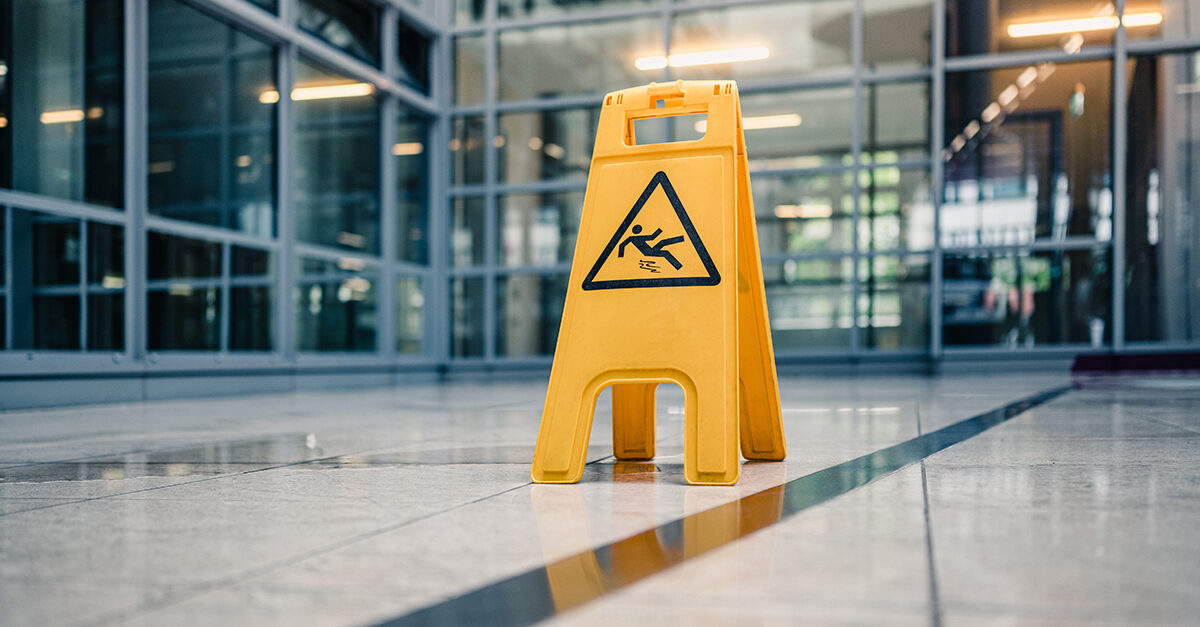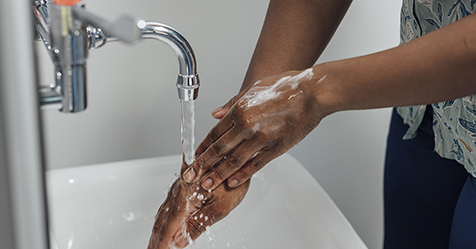When it comes to slips, trips, and falls (STFs), the statistics are scary. Consider that globally, an estimated 684,000 people die each year from falls, with STFs the second-leading cause of unintentional on-the-job fatalities, according to the World Health Organization (WHO). Although most falls don’t lead to death, 3.7 million of the falls that occur annually worldwide are severe enough to require medical attention, WHO reports. In the United States alone, falls account for more than 8 million hospital emergency room visits, representing nearly one-quarter (21.3%) of all visits,, according to the National Floor Safety Institute (NFSI).
In addition to causing injuries, falls cost money and result in lost work productivity. The National Institute for Occupational Safety and Health (NIOSH) reports that among the 888,220 nonfatal work injuries in 2019 that resulted in lost workdays, 27% were STF-related. STFs suffered by U.S. workers cost an estimated US$70 billion per year, NFSI figures reveal.
As the statistics show, the problem is pervasive. Fortunately, facility managers and building service contractors (BSCs) can help prevent STFs. This article provides solutions to protect facility occupants and visitors from harmful and expensive falls.
Q: What facility conditions cause STFs?
Some of the most common causes of STFs include:
- Slippery floors due to oils and grease, melting snow or ice, and other wet or dry spills
- Improperly covered or secured electrical cords, cables, and other wires
- Change in flooring elevations or walkway/ramp slopes, improperly sized step risers, and uneven or poorly spaced steps
- Traction changes in connected flooring types (from wet to dry floors, tiles to carpeting, etc.)
- Floor mats that are unsecured or have high edges
- Floors that are dirty, have worn finish, or are in poor shape (loose, cracked/chipped tiles, ripped vinyl)
- Poor lighting, excessive glare or shine on floors, and obstructed views
- Clutter on floors or bottom cabinet drawers left open
- Elevators misaligned with the floors
- Lack of handrails.
Q: What are the best ways to keep floors dry, clean, and safe?
Facility managers must ensure the conditions above do not exist or are remedied quickly. An ongoing quality floor care program is a must, along with year-round placement of quality scraper and wiper mats in adequate lengths.
Q: Do certain types of flooring cause STF accidents?
All flooring has the potential to contribute to STFs. However, floors with a poorly applied or inappropriate finish, or that are badly worn or dirty, may be most risky. Also, polished concrete, terrazzo, and ceramic tiles can be slipperier than other floorings and, therefore, prone to causing more STFs.
Q: What time(s) of the year are STF accidents most likely to happen?
STFs occur throughout the year. However, STFs are typically higher in winter in areas that receive a lot of snow and during rainy seasons such as spring. It is vital to make people aware of potential STF hazards with signage to minimize incidents and mitigate potential liability when incidents occur.
Q: What new technologies help make floors safer?
- Floor finishes—While not new, more floor finishes have achieved UL and NFSI certification that demonstrate their slip resistance.
- Specialty products—Many newer cleaners and topical treatments increase shoe-to-floor traction.
- Internet of Things (IoT)—Increasingly, manufacturers and other businesses are deploying IoT technology to send real-time alerts to identify fall hazards. GPS also can alert cleaning crews where a spill has occurred, track workers to expedite a cleanup, and warn occupants to avoid the area.
- Robotic floor machines—Automatic floor scrubbers can clean floors while workers perform more complex floor tasks, such as wet/dry vacuuming entrance matting and cleaning spills.
- Floor slip-resistance testing services and equipment—More distributors and manufacturers use this equipment to assist facilities in verifying/validating slip coefficiency (amount of friction) at different times, such as before and after refinishing.
Q: What kind of training should facility maintenance staff undergo to help reduce STFs?
All team members should receive comprehensive STF training that:
- Emphasizes that all floors and areas have the potential for STFs
- Identifies potential STF hazards
- Ensures team members understand and follow defined floor safety practices
- Promotes a “Safety First” culture
- Defines roles and responsibilities to hold people accountable
- Includes a review of the risk assessment plan
- Instructs workers in how to report any incidents that occur.
Q: Can cleaning methods or products contribute to—or help prevent— STFs?
Yes, cleaning methods and products can increase or decrease the risk of STFs. Some preventative actions include:
- Trapping ice melt product as close to entrances as possible
- Keeping matting clean and dry
- Using slip-resistant flooring products certified by the UL or NFSI
- Always using a quality floor cleaner with a neutral pH on floors with finish
- Modifying walking surfaces by recoating, replacing, or installing abrasive slip-resistant strips or finishes.
Q: What is an STF risk assessment plan, and what should it include?
An STF risk assessment plan helps identify areas that pose a higher STF risk and ensures maintenance personnel know the proper procedures for preventing and reporting STF incidents. At a minimum, an effective STF risk assessment plan should include:
- Basic training on how to avoid accidents
- A list of approved floor care equipment and products, including safety data sheets
- Floor maintenance schedules
- Work orders for nonroutine maintenance
- A timeline for project follow-through and completion
- Forms to capture critical information when an incident occurs
- A method to collect suggestions for process and protocol improvements.



